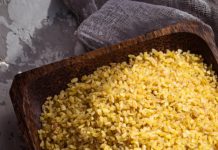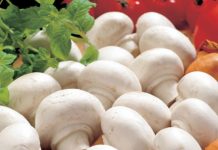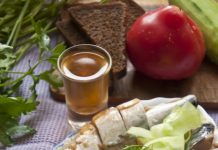How to make mastic? There are enough recipes. This plastic mass opens up great opportunities not only for confectioners, but also for ordinary housewives who like to delight themselves and their loved ones with various “goodies”. You can form all kinds of figures, flowers and ribbons from mastic, as well as create whole compositions on cakes.
Material Content:
Marshmallow Cake Mastic
Marshmallows are chewing marshmallows, a treat especially enjoyed by children. You can buy sweets in any supermarket, and a package of marshmallows costs much cheaper than ready-made mastic. To prepare it, you will need another spoon of oil and a pound of powder for every 200 g of chewing marshmallows.

- We spread the marshmallows in a glass container, send the butter there and put the products to heat in the microwave for 40 seconds. If it is not there is nothing to worry about. You can melt chewing marshmallows in a water bath.
- When the marshmallow doubles, sift the icing sugar directly into the container and gently knead the composition. If you want to get colored mastic, you should add dye, diluting it first with vodka.
- Knead the mass with a spoon until possible. Then we lay out the formed lump on the powdery surface and knead it further with our hands to remove all the bubbles, make the mastic plastic and elastic.
Ready-made marshmallow mastic lends itself perfectly to processing and does not stick to your hands. It resembles plasticine or modeling dough. You can create anything from it!
Before you start cooking, divide the marshmallows by color and make mastic from each one separately.Or simply: buy white marshmallows and color the desired amount of plastic mass in the desired shade using food coloring.
Cooking from Egg Whites
Why is it profitable to cook mastic at home? Firstly, it is not difficult. Secondly, cheaper than buy. And thirdly, you know exactly what constituents are included in it, and therefore you are sure that there are no harmful substances inside.
Edible mastic prepared on the basis of egg whites is very malleable, and it is prepared according to this algorithm:
- Fresh egg whites are very carefully mixed with a whisk or a mixer at low speeds. A mass of foamy consistency should be obtained, as on meringue.
- Now add the powdered sugar at the rate of 500 g per protein. Gently knead everything with a spoon.
- And the last step. Add 2 tbsp. l glucose and mix again.
Wrap the finished mastic in plastic wrap and send it to a cold place (best of all, in the refrigerator) for at least two hours. The mass will get stronger and gain plasticity. Immediately before sculpting, the mastic must again be mixed and, if necessary, add a little powdered sugar.
Attention! From this mass, flowers or figures can be formed. Products are obtained not only beautiful, but also delicious. Just for starters, you need to decide what color they will be. Want white? Do not add anything. Want a soft yellow - pour a little honey, brown - chocolate, the other - food coloring.
Gelatin Recipe
Gelatin mastic is prepared simply and does not require the use of any specific ingredients.

- Soak the powder in a container of warm water. It should completely dissolve and swell.
- Next, add 60 ml of water, 200 g of powder, 2 tsp. lemon juice. All components are thoroughly mixed until a plastic mass is obtained.
- At the very end, add dyes and begin to sculpt the figures.
Chocolate mastic for cake
Making chocolate mastic, by the way, is very simple.
- The first step is to melt the chocolate. It is better to take natural, in pieces, a hundred grams will be enough. He has a richer taste, and it’s easier to work with.
- In melted chocolate we add powder (120 g), 30% cream (50 ml) and a spoonful of butter. You can drip and cognac, approximately 10 - 15 grams.
- Mix all the components, put the resulting mass into a food film and leave to freeze. After an hour or two, you can begin to sculpt.
From milk powder
Mastic for the cake with your own hands is good if you cook it from milk powder. If this could not be found, use baby food.

- So, in a ratio of 1: 1: 1, mix the milk powder, flour and condensed milk. Add lemon juice.
- Knead the ingredients very carefully first in a bowl and then on a cutting board. You should get a tight, dense mass that does not stick to your hands.
- After, put it in the refrigerator for half an hour.
If you want to give the mastic some color, use food coloring. But you need to paint it after you got it out of the refrigerator.
That's it, now we sculpt the figures and decorate the dishes with them.
How to make condensed milk
Condensed milk mastic is easy to process. It is prepared very simply, but it looks delicious. The figures made from it turn out brilliant, and their color is saturated.
So, how to prepare a plastic mass for a cake from ordinary condensed milk? Prepare the following ingredients: a glass of cream, 200 g of sugar, 150 g of condensed milk and 1 tsp. lemon juice.
- All components are placed in one container and knead first with a spoon, then with your hands.
- Mastic should be elastic, thick, dense. It does not stick to your hands and rolls easily.
If you do not use all the mastic at once, you won’t have to throw out the rest. It can be placed in a plastic bag or cling film and stored in the refrigerator. In a vacuum, it does not dry out and does not lose its qualities.
Sugar mastic for cake
It is difficult to find a more successful invention for decorating desserts than sugar mastic. It appeared in the 17th century, but the peak of its popularity falls on the 19th century. It is called sugar for the reason that it contains powdered sugar, which is usually very fine, thin. There are several varieties of such mastic with sugar, which differ in appearance and composition.

Here are the most popular ones:
- marshmallows or marshmallows mastic;
- dairy;
- gelatin;
- starch;
- honey;
- marzipan;
- chocolate, etc.
Ideally, the mastic should be plastic, flexible, not stick to the hands, keep in shape and harden in a timely manner. To achieve such characteristics, it is necessary to strictly adhere to cooking technology.
Attention! Finished figures made of mastic should be left to harden. At first they will be very fragile, but then they will become quite hard. They can be painted and decorated with various beads (edible) and other decorative elements.
Honey Cooking Option
The preparation of honey mastic involves the use of:
- natural liquid honey in an amount of 1.5 tbsp. l .;
- 1 p. Gelatin;
- 1.5 tbsp. l butter;
- 7 tbsp. l water;
- 250 g of powder.
Cooking like this:
- We start with gelatin. It is dissolved in warm water and left to swell.
- Bring the swollen mass to a boil over low heat and add other ingredients except the powder.
- We begin to pour it in small portions already when the mass begins to cool.
- Knead the mastic, like dough, until it stops sticking to your hands.
DIY flower cake mastic
The mastic from which flowers are sculpted is a real masterpiece. It is used by professionals, making decorations not only on cakes, but also on other confectionery products: loaves, muffins, cupcakes. The technology for making mastic is more complicated than previous recipes, but the result is worth it.

First, stock up on everything you need, namely:
- icing sugar - 500 g;
- Carboxy Methyl Cellulose - 9 g;
- gelatin (do not try to save, take high-quality) - 9 g;
- water - 40 g;
- corn syrup - 50 g;
- egg white;
- cooking oil - 1 tsp;
- lemon juice.
Getting started:
- Pour gelatin with cold water.
- Pour SMS and powder into a glass bowl, a bowl of a combine / meat grinder or other working utensils, add lemon juice.
- The gelatin is brought to uniformity in a water bath, stirring constantly. To him we send confectionery fat and corn syrup.
- Pour gelatin into a container with a thin stream of powder, then protein and quickly knead everything.
- Wrap the finished mastic in cling film with 5 - 6 layers and leave for several days. You can start working with it only after the set time has passed.
Marzipan decoration
Marzipan mass gives cakes a special aesthetics, evens out all defects and bumps. The recipe is very simple.

- First, beat 3 eggs with 175 g of powder.
- In a water bath, bring the mixture to uniformity, remove from heat and add 350 g of almond flour, lemon juice and vanilla essence to it.
- Work with this mastic should be on a dusted surface.
When working, make sure that no oil is released from the mass.
It is necessary to sculpt until the mastic has cooled down, because it retains excellent plasticity and elasticity only in a warm form.
How to make mastic color or shiny?
To give sugar mastic the desired color, two types of dyes can be used: natural and artificial.
- Natural made from fruits and vegetables. The first should be crushed, the second - grate. The juice obtained from them is stored in the refrigerator.
- In order not to bother, you can buy artificial dyes. They can be dry, liquid or gel.
Natural dyes give not only color, but also aroma, but artificial ones give a rich shade.
Often, various traces, fingerprints, residues of dyes, etc. remain on the finished figures.You can fix these defects in one proven way. Mix vodka with honey in a ratio of 1: 1, stir the ingredients and make the mass homogeneous. The resulting product is simply applied with a brush to the figures. Do not worry about whether there will be an unpleasant aroma or taste. Of course not! Vodka will disappear, leaving behind only shine and gloss.



























